
|
COLD WAR 1946 to 1992
Flags relating to Opposing Blocs
|
|
|
Flags with the North Atlantic Treaty Organization (NATO)
|
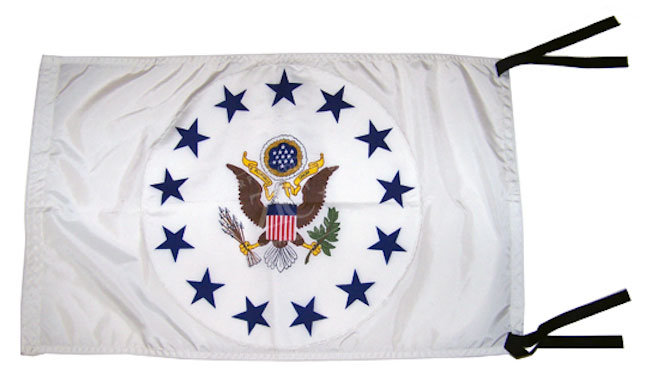
|
|
ZFC2464Â The Automobile Flag of The United States Permanent Representative to NATO, more commonly called the US Ambassador to NATO, is used to identify the vehicle in which the ambassador was traveling. Although the use of these flags has waned for security reasons during the Global War on Terror, the flag remains a visible reminder of the importance of NATO during the Cold war, the appointment of an ambassador level diplomat to NATO. Read more
|
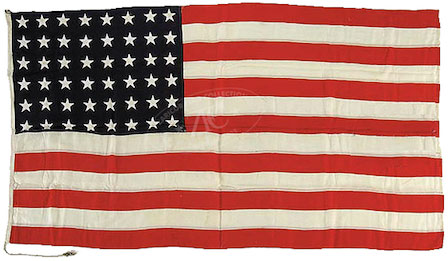
|
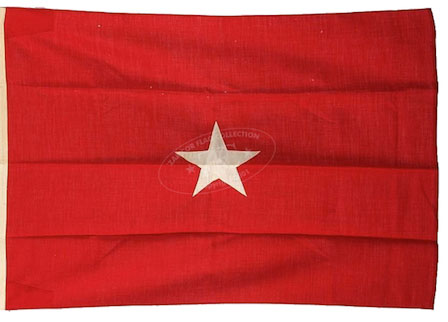
|
|
ZFC3544 This is the ensign of the USS Decatur (DD-936), launched 15 December 1955 during the first decade of the Cold War. Decatur cruised in the Mediterranean with the US Navy’s 6th Fleet, and participated in spacecraft recovery but her major Cold War role
was taking part in Cuban Quarantine operations in 1962. She was decommissioned in 1965. She was reclassified and recommissioned as a guided missile destroyer (DDG-31) in 1966 and served until 1983. Read more
|
ZFC3283 This U.S. Army, Brigadier General Personal Flag was used by Brigadier General William Hesketh, in 1947, when he served as the “Military Mayor†or City Commandant of Berlin’s American Sector under the Allied Military Government of Germany. The partition of Berlin was one of the events leading to the tension between the former allies sparking the Cold War. General Hesketh had British, French and Soviet counterparts. Read more
|
|
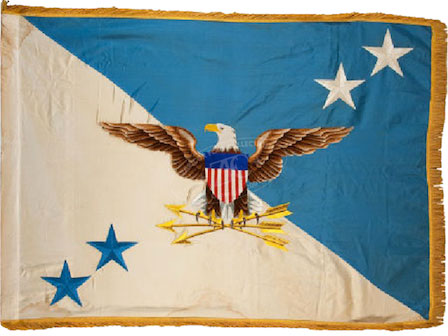
|

|
|
ZFC3584Â Flag of the Chairman of the Joint Chiefs of Staff General Lyman Lemnitzer, who as Chairman (1960 to 1962) was cognizant of the ill-fated Bay of Pigs invasion of Communist Cuba and had the Joint Chiefs, evaluate the feasibility of the plan. The Bay of Pigs invasion was perhaps the one of the most infamous events of the Cold War. Read more
|
ZFC0051 This is the Jack of the USS Truxton (DLGN-35/CGN-35) a nuclear powered cruiser launched 19 December 1964. Perhaps her most significant Cold War service was her deployment to the sea of Japan after North Korea seized the USS Pueblo. The Truxton spent most of her career with the US Navy’s 7th fleet in the waters of the Pacific Ocean, including extensive service in Vietnamese waters.
She was decommissioned in 11 September 1995. Read more
|
|
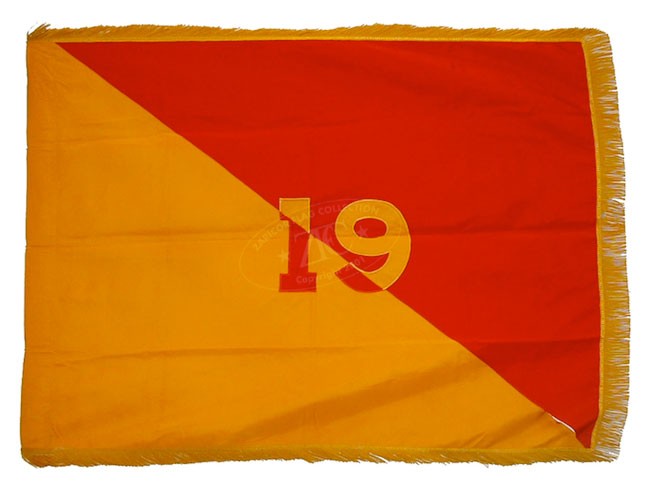
|
|
ZFC2413 This is the organizational color for the US Army’s 19th Artillery Group. US Army groups are similar to brigades but generally control smaller and fewer subordinate units, typically a mix of battalions and separate companies. The 19th Artillery Group operated Nike missile installations between 1961 and 1974, on both coasts during the Cold War. Read more
|

|

|
|
ZFC3417Â The 60th U.S. Field Artillery regiment was originally raised in Virginia and Washington DC for service during the First World War. In 1924 the 60th were reassigned as a Coast Artillery regiment and assigned to the fortress at Corregidor. After WWII, the fixed guns of the Coast Artillery were rendered obsolete by the frightful weapons of the Cold War and the 60th Artillery was redesignated an Air Defense Artillery unit. From 1953 to 1979, the United States Army established over 200 Nike anti-missile air- defense batteries as the last line of defense against nuclear assault by the USSR. This U.S. Army Philadelphia Quartermaster Depot guidon was carried by Battery D, 6th Battalion, and 60th Air Defense Artillery at one of these installations on the East Coast. Read more
|
ZFC3070Â The 112th U.S. Field Artillery was organized out of long- serving New Jersey National Guard units to deploy along the Mexican - U.S. Border. They also served in WWI and WWII. During the
Cold War, the 112th underwent successive redesignations and reor- ganizations. While they were designated an Air Defense Artillery organization, Battery B of the 6th Battalion carried this Philadelphia Quartermaster Depot-made guidon; doubtless at one of the many Nike missile installations in New Jersey, perhaps under the 19th
Air Defense Artillery Group (ZFC2413). They remain today,
a unit of the New Jersey National Guard. Read more
|
|

|
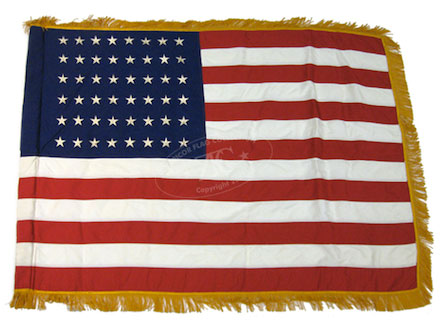
|
|
ZFC0077Â This is the Commission Pennant from the christening of the USS Francis Scott Key (SSBN-657), a nuclear-powered ballistic missile submarine launched 23 April 1965. She was decommissioned 2 September 1993 and over the length of her 28 year careers she completed 72 Cold War deterrence patrols. Over the course of her service she was armed with three different missile systems; initially with Polaris, then Poseidon, and finally the Trident. Read more
|
ZFC3330Â This 48 Star United States Parade Flag from the Defense Department was used by Charles Martin Gettys between 1966 and 1969 during his tenure at the Pentagon when he served as Deputy Director of Operations, and Deputy Special Assistant for Strategic Mobility. During the Cold War the size of the Department of Defense grew tremendously with flags like this being used by both civilian and military officers in their official duties. Read more
|
|

|
|
ZFC0140Â The United Kingdom was a vital component of the NATO naval forces in the North Atlantic. This Royal Navy White Ensign, from the 1960s, is from an unnamed Royal Navy vessel and was presented to the Star Spangled Banner Flag House and Museum in Baltimore, Maryland during the Cold War. Read more
|
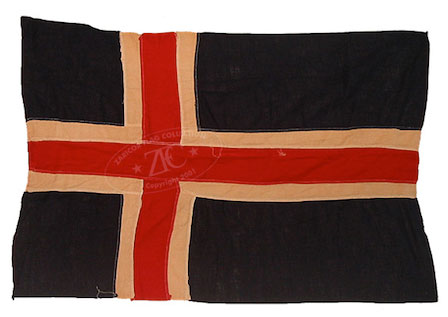
|
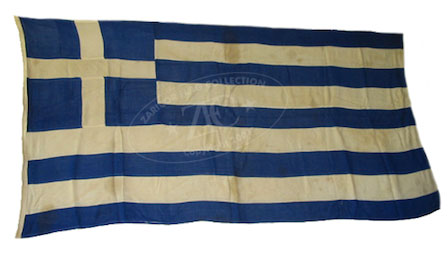
|
|
ZFC1111 Iceland was an original NATO member, joining at its inception in April of 1949. Iceland is also the only NATO member with no standing army; however, because of Iceland’s strategic location in the North Atlantic, she is an important NATO member, hosting the biannual Northern Viking exercises to test NATO’s readiness and inter-operability. Read more
|
ZFC0937 Greece joined NATO in 1952 the same year as Turkey Both countries signed the North Atlantic Treaty on 18 February 1952 and have been key contributors in promoting the security of the Euro-Atlantic area, and more specifically, NATO’s Southern Flank. Read more
|
|
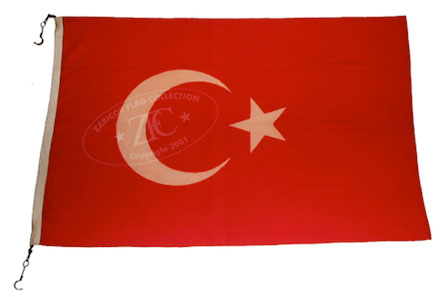
|
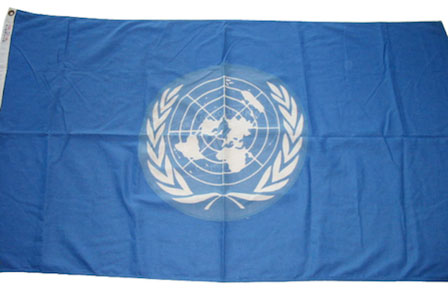
|
|
ZFC1119 Turkey, like Greece, joined on 18 February 1952. Turkey, although officially a secular state, was the first Muslim nation to join NATO. As longtime adversaries of the Greeks, they are a tribute to NATO’s success over the past half-century, demonstrating that the bond between Allies remains as strong as ever, and that NATO remains an agent of positive change. Read more
|
ZFC0890 The United Nations (UN) was inadvertently thrust into one of the proxy armed conflicts of the Cold War when the Soviets boycotted the UN Security Council meetings while protesting the UN’s failure to seat the Peoples Republic of China and, thus, did not veto the Council’s approval of UN action to oppose the North Korean invasion of South Korea, triggering the Korean War.
The UN flag was used by the 22 nations that sent troops to the United Nations Command in Korea. Read more
|
|
|
Warsaw Pact Flags with a Soviet Bloc association
|
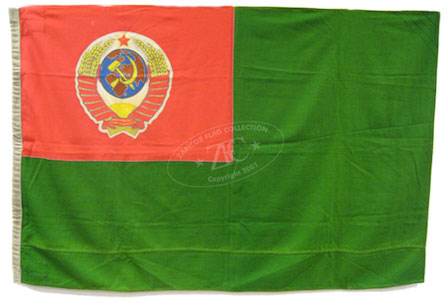
|
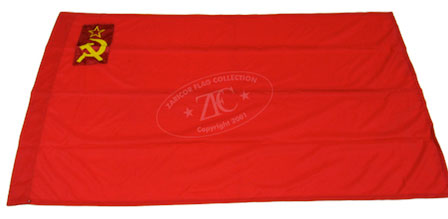
|
|
ZFC3579Â The Flag of the State Chairman of the Committee on State Security (Komitet gosudarstvennoy bezopasnosti) or KGB, which was the national security agency of the USSR responsible for internal security and foreign intelligence and as such was the clandestine arm of the USSR in carrying out the Cold War. During the Cold War five men held this office and displayed this flag. This flag was used from 1950 to 1992. Read more
|
ZFC3531 Union of Soviet Socialist Republics (USSR) National Flag – The USSR was the nemesis of the West during the Cold War. This flag dates from the 1980s and reflects the 1977 law which called for the hammer and sickle on one side only. Read more
|
|

|
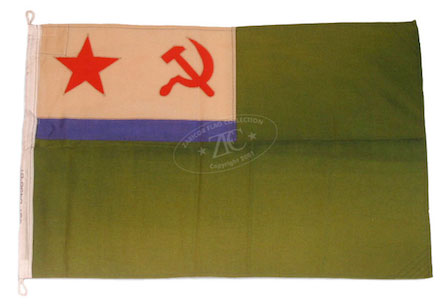
|
|
ZFC1108 The naval ensign of the Union of Soviet Socialist Republics (USSR) was adopted in 1935 and abolished in 1992 after the collapse of the USSR. The naval ensign combined traditional symbols of communism—the red star and hammer and sickle—with the white and blue colors of Russia’s old tsarist war ensign. During the Cold War the Soviet Navy played an instrumental role as the premier surface force of the Warsaw Pact. This ensign was for ships awarded the honorary title “Guards,†a Guard Ribbon in the black and orange colors of the Order of Glory (intentionally the same colors as the ribbon of the tsarist Cross of St. George) was added above the blue strip. Read more
|
ZFC1113Â Frontier Forces or Border Guards Ensign of the Union of Soviet Socialist Republics (USSR) was for those vessels charged with protection the borders of the USSR. The green field was used on flags and ensigns of the internal border security forces, and combined with the naval ensign of the USSR. Unlike the Soviet Navy, which projected the power of the USSR abroad, the frontier fleets patrolled the borders and prevented flight
from the USSR by sea. Read more
|
|

|
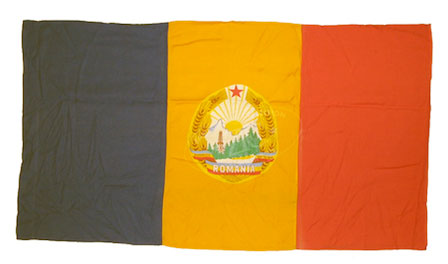
|
|
ZFC0945Â This Soviet naval command flag would have been used to indicate the commander of a division or group of surface ships of the navy. During the Cold War the Union of Soviet Socialist Republics was a global power with fleets in three oceans. To counter the power- ful navies of the NATO forces the USSR relied on numerous small, fast missile boats. The flag officer commanding these flotillas would have displayed this flag. Read more
|
ZFC0339Â The national flag of Romanian Peoples Republic from 1965 to 1989 was used during of the Cold War. Romania was a signa- tory of the Warsaw Pact and like other nations in the Soviet orbit used a traditional field as the basis for the national flag which was then defaced with an arms reflecting typical socialist heraldic themes. Read more
|
|

|

|
|
ZFC2341 The State Flag of the Bulgarian Peoples Republic, from 1971 to 1990, placed a stylized socialist version of the Bulgarian arms, with an uncrowned lion, in the upper white stripe of a flag made of the traditional Bulgarian colors of white, green & red. Although the flag’s origins are from the 19th century, this socialist flag served Bulgaria while it was a satellite member of the Warsaw Pact during the Cold War. Read more
|
ZFC0923Â The German Democratic Republic (GDR) or as it was more commonly know East Germany, used a state flag from 1949- 1990 which retained the black red gold of the Weimar Republic, but superimposed, in the center, the arms of the GDR. It would serve the GDR diring the entire Cold War. Read more
|
|
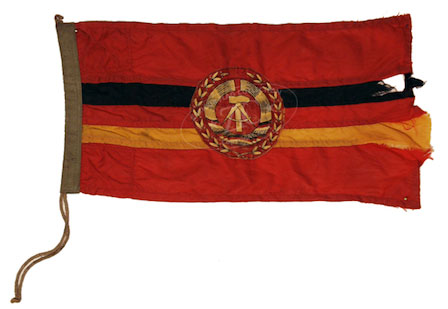
|
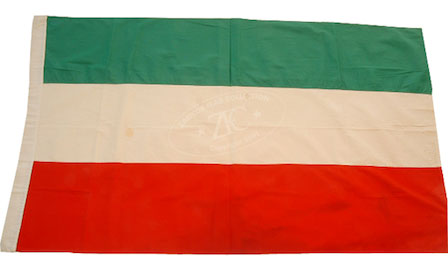
|
|
ZFC1058Â The Naval Ensign of the German Democratic Republic, was a red flag with a stylized version of the state flag centered. This ensign would have been used on small boats and patrol craft which ironically spent most of their time preventing East Germans from escaping to the West rather than defending the security of the GDR. Read more
|
ZFC2164 The Hungarian People’s Republic used a horizontal tri-band of red, white and green defaced with the Hungarian socialist style arms. After the Hungarian Revolution of 1956 these arms were removed from the national flags, making Hungary the only Soviet satellite and Warsaw Pact nation, to utilize its pre-communist national flag during the Cold War. Read more
|
|
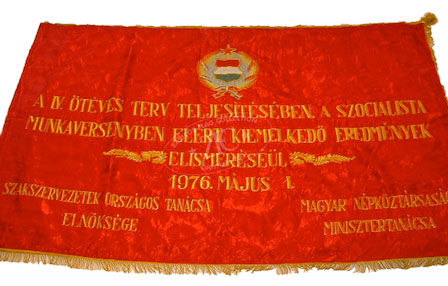
|

|
|
ZFC2345 Hungary Peoples Republic Cold War era Propaganda & Morale Flag for the fourth five year plan of 1 March 1976. This flag awarded by the Hungarian People’s Ministry, recognizes the outstanding productivity of the Trade Unions. Red flags like this were ubiquitous in the Soviet Bloc for distribution to civilians
and military as rewards for socialist achievement. Read more
|
ZFC1123 The People’s Republic of Albania, between 1945 and1992, used the traditional Albanian symbol of a double-headed eagle but topped by the gold bordered red star of international communism. The flag had been previously used by Albania’s Communist Partisans while battling the German occupying forces during World War II. Although an original member of the Warsaw Pact, Albania withdrew in 1968 citing ideological differences with the Soviet Union, and would be an ally of the Peoples Republic of China for the
remainder of the Cold War. Read more
|
|
|
Non-Aligned Countries
|
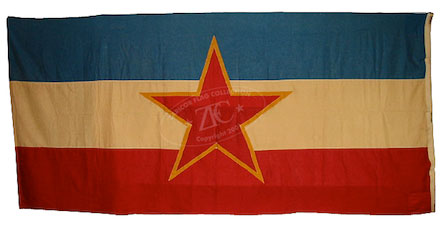
|
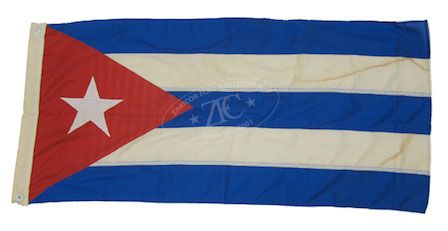
|
|
ZFC0853 Socialist Yugoslavia’s national flag bore the “partisan star†from 1945 to 1991, which honored the anti-fascist fighters of Joseph Broz Tito, the Yugoslavian revolutionary leader and the first president of Yugoslavia after World War II. Yugoslavia was never a member of the Warsaw Pact and during the Cold War Tito founded the Nonaligned Movement in Belgrade in 1961 as a counterpoint to both the East and West. Read more
|
ZFC3552 The Cuban National Flag did not change after the Cuban Revolution of 1959, which brought Fidel Castro to power. This flag’s origins were during the Cuban struggle for independence from Spain. This was the Cuban Flag during both the Bay of Pigs Invasion and the Cuban missile crisis, two of the seminal events of the Cold War. Read more
|
|
|
The Peoples Republic of China - The Cold War Anomaly
|
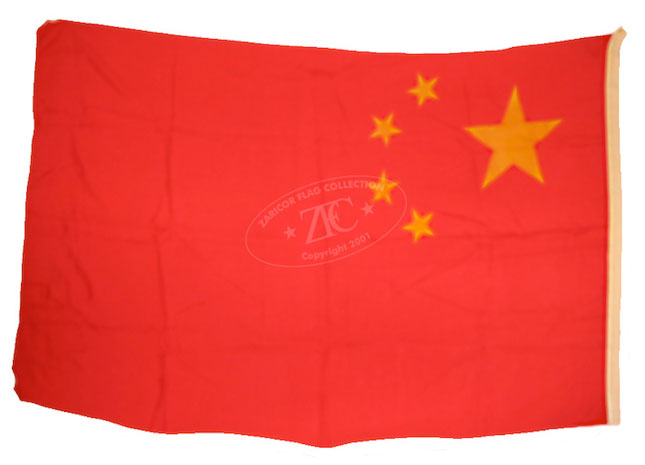
|
|
ZFC1266 The national flag of the People’s Republic of China was adopted in 1949. Although initially nominally ideologically allied with the Soviet Union, China made her own way in the Cold War after the Sino-Soviet split in 1961, but never joined the Non-Aligned Nations. The Chinese supported various wars of national liberation in Asia and Africa – notably the Chinese support for Communist regimes in Southeast Asia. Read more
|
|
Hot Spots of the Cold War - Korean War
|
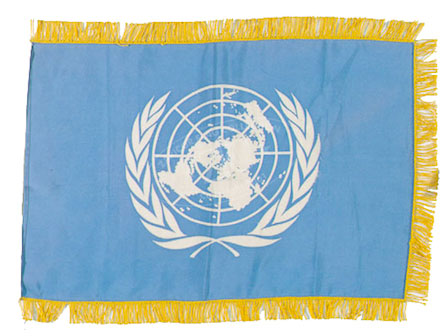
|
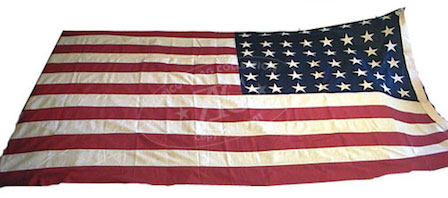
|
|
ZFC1272 This United Nations flag was from General Matthew B. Ridgeway’s estate. It was utilized by General Ridgeway, between 11 April 1951 and 12 May 1952, as commander of the United Nations Command (UNC), the unified command structure for the multina- tional military forces supporting the Republic of Korea (South Korea or ROK) during the Korean War. General Ridgway replaced General of the Army Douglas MacArthur who had been removed by President Harry Truman. As the commanding general of the UNC, General Ridgeway was in charge of soldiers, sailors and airmen from 18 different nations. Read more
|
ZFC0034 United States 48 Star Military Storm Flag - This flag was made by the Philadelphia Quartermaster of the US Army late 1940’s or 1950. Used in the Korean War as a base flag for use during inclement weather. The condition of the flag suggests its use was infrequent. It was donated to the Star Spangled Banner Flag House by an unspecified person(s) in 1981. This suggests a veteran or the family of a veteran gifted the flag upon the death of the veteran which is a common practice by families in honor of the soldier
who served. Read more
|
|
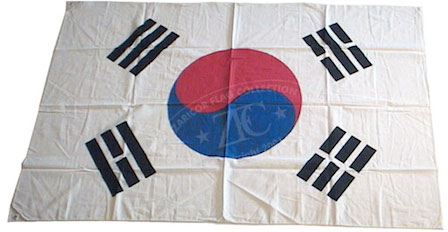
|

|
|
ZFC1021Â Cotton flags from the Republic of Korea, more com- monly called South Korea, were widely distributed during the Ko- rean War (1950 to 1953) for use in conjunction with United Nations flags and the flags of one of the 18 nations with combat forces par- ticipating in the United Nations Command, led by the United States. This flag is typical of Korean made printed cotton flags finished with corner tabs and grommets. Read more
|
ZFC1515Â This small cotton South Korean flag is a souvenir of the Korean War. Small flags like this were likely used for patriotic pur- poses to boost South Korean moral and national pride. They could also be used on South Korean military vehicles, to further identify them, as they were all supplied by the United States. The well used flag is typical of flags brought home by returning GIs as a memento of service. Read more
|
|
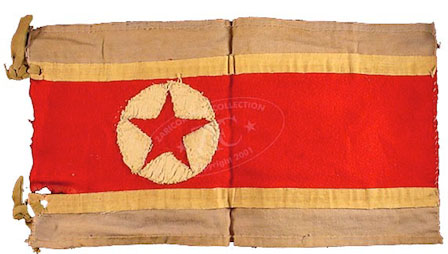
|

|
|
ZFC3241 This small, hand-sewn, wool and cotton North Korean Flag is a field expedient made by soldiers from materials they had at hand. The red star is created by the cutting away of a star-shaped section of the white cloth circle appliquéd to the red center stripe. The fimbriation on either side of the red stripe is made from two strips of white adhesive bandage tape, presumably from a field medical kit. The flag's previous owner, the now defunct Soldiers’ Museum of Davenport, Iowa, reported that it was a GI “Bring Back†from a veteran who served in both WWII and Korea. They identified it as a military vehicle pennant. North Korean flags from the conflict are quite rare for reasons still not clearly understood. Read more
|
ZFC1273 This three star U.S. Army lieutenant general’s flag (1945 to 1951) was formerly part of the estate of General and
Mrs. Matthew B. Ridgeway. He utilized this flag in Korea after his appointment to command the 8th Army, in December of 1950, until his promotion to full general in April of 1951. When Ridgway took command, the 8th Army was still in retreat but General Ridgway was successful in reversing the morale of the Eighth Army and putting it on the offensive. Read more
|
|
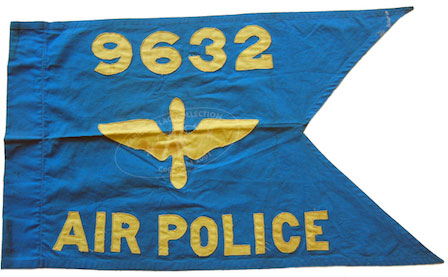
|

|
|
ZFC2222Â This is a field expedient, theater made, guidon dating from early in the organizational history of the Air Police. When the United States Air Force (USAF) separated from the United States Army in 1947, the ground security responsibility for air bases was transferred to the new service. In 1948 the Military Police attached to the United States Army Air Forces became the Air Police.
The Korean War (June 1950 - July 1953) would be the first foreign conflict in which the USAF would participate as an independent service. At the commencement of hostilities the nascent Air Police had only 10,000 personal with which to begin urgent operations focused on air base defense. By December 1951 the Air Police had grown to almost 40,000 airmen. These USAF Air Policemen were under-trained, under-equipped, under-manned, working long shifts for base security, and in haste, outfitted with a hodgepodge of issued and locally acquired brassards, guidons, and uniform accoutrements. This flag is typical of guidons from this period. Read more
|
ZFC3057 This is a theatre made pilot’s rescue flag jacket patch or “Blood Chit†that was made during the United Nations led efforts to thwart the invasion of South Korea by North Korea. The rescue message is printed in two languages, English and Korean, and bears the flags of the United States, the United Nations and South Korea, 1950 to 1953. Aviator “Blood Chits†had their origins in British India during the inter-war years, but their use was widespread during WWII, and continued during the Korean War. They were a downed aviator’s “Last Hopeâ€, offering a reward for the safe return of the flyer. Read more
|
|
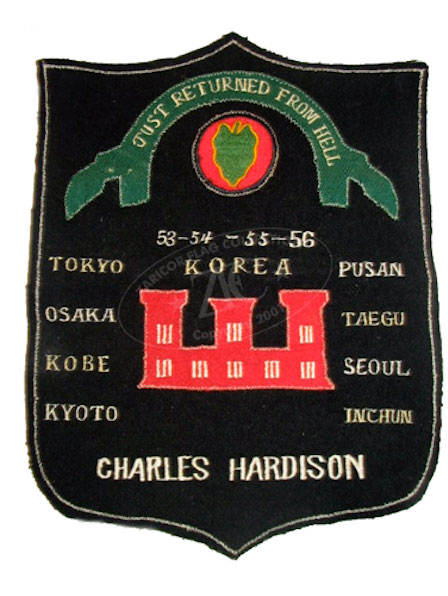
|

|
|
ZFC2052 This commemorative Jacket patch is not a “Blood Chitâ€, but rather modeled on one, this commemorative jacket patch details the Korean service of Charles Hardison, an engineer with the 24th Division, the first U.S. troops to enter Korea, 1953 to 1956. Read more
|
ZFC3478 Map of the Korean Peninsula Military Action sites – 1953 A propaganda piece published by the US Army’s Newspaper “Stars and Stripes†in 1953 to show the key points of action in the war since 1950 when hostilities broke out. Though not an official “war map†of the US Military’s role in Korea during conflict it did serve to give the American GI a sense of the area and what had taken place over the last 3 years. The US Stars and Stripes was an official publication of the Defense Dept. for all military branches of service since its origins in the American Civil War with military reporting from the front lines beginning in WWI and expanded to all theatres during WWII. It continues to this day. Read more
|
|
Hot Spots of the Cold War - Vietnam War, 1955 to 1975
The United States of America
|
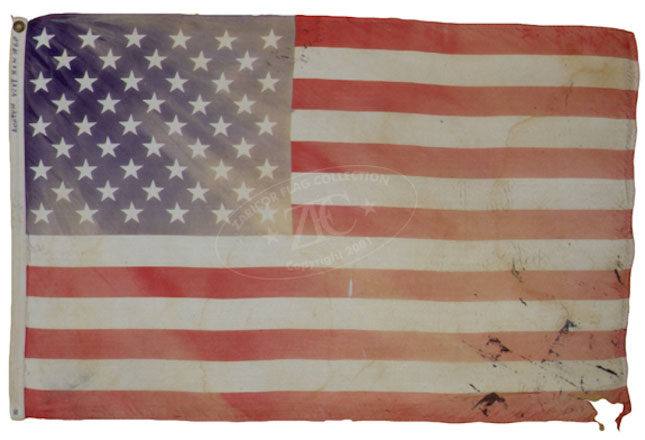
|
|
ZFC0748Â This early 50 Star U.S. Flag was used in Kontum Province, Vietnam 1960. In 1950, during the presidency of Harry S Truman, the U.S. government sent the Military Advisory Assistance Group (MAAG) to Indochina to aid the French in their colony of Vietnam. After the French withdrawal in 1954 the United States continued aid to the republic established in the southern half of the former colony. The MAAG advisors were not to engage in combat except to defend themselves. While technically serving under the flag of the Republic of South Vietnam, many of the advisors took private purchase flags with them for unofficial display. This very early 50-star flag was used by an advi- sor assigned to the MAAG in Kontum Province, Vietnam, in 1960, during the presidency of Dwight D. Eisenhower. Note the faded diagonal striations caused by hanging motionless under a fierce tropical sun. In 1961 President John Kennedy replaced the MAAG with the
Military Assistance Command, Vietnam. Read more
|
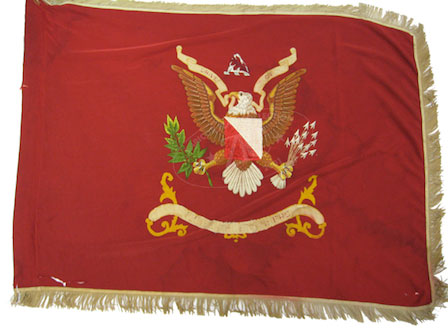
|
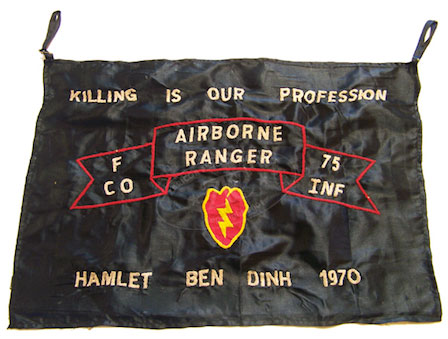
|
|
ZFC3365Â U.S. 15th Combat Engineer Battalion Color - This color accompanied the battalion to Vietnam in 1966. While in country the 15th specialized in riverine operations and airmobile engineer sup- port. The 15th Battalion was twice decorated with the Vietnamese Cross of Gallantry with Palm for its outstanding military service. They also received a Civil Action Honor Medal, First Class, for their numerous civic actions. While still in country, the well worn color was replaced and this one was presented to a Sgt. Harris, to whom it is inscribed. The 15th departed Vietnam in August 1969 for Hawaii, where they were deactivated. Read more
|
ZFC2461 Theatre made “Hooch Banner†Team 38, Company F, 75th Infantry, 3rd Brigade, and 25th Division. Nicknamed the “Tropical Rangersâ€, they served near the infamous Chu Chi tunnel complex. This unofficial banner is typical of locally acquired flags use by soldiers and units to decorate their living quarters and com- pany areas. They served as moral builders and reflected unit pride. They often included insignias, unit designations, patriotic slogans, or mottos which often reflected macabre humor common at the front. Read more
|
|

|

|
|
ZFC2550 This cotton Illinois State Flag (1915 – 1971) was used by a soldier named Wendorf from Vandalia, Illinois during his service in Vietnam. It was common for GIs serving in country to acquire personal flags from their home states to display on or in their hooches. It was the use of the undefaced Illinois state flags in Vietnam that prompted the Illinois legislature to add the states name to the flag under the insignia in 1971. Read more
|
ZFC2541Â This is a United States Marine Corps Hunter Killer Team, Khe Sanh, RVN (Republic of Vietnam) Banner. The Hunter- Killer Teams were all volunteer teams that carried out special mis- sions utilizing unorthodox offensive tactics to close with and destroy the enemy. They also raided villages at night to capture Viet Cong prisoners. This banner has been identified as a theater made barracks room banner, but because of its similarity to other
known examples, it may be a post-war souvenir artifact. Read more
|
|
|
Vietnam War - Republic of Vietnam (South Vietnam)
|
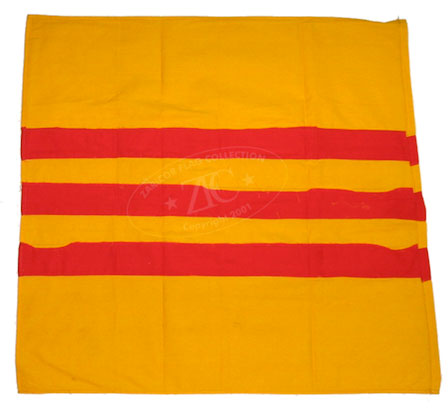
|
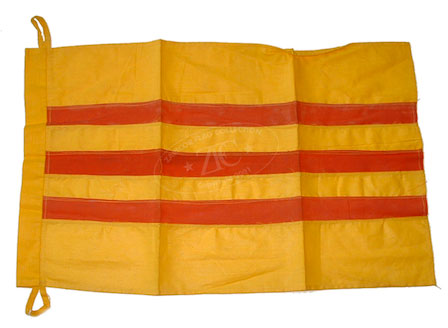
|
|
ZFC1501Â The Flag of the Republic of Vietnam, three red horizon- tal stripes on golden yellow was simple and easy to produce and this home-made cotton attests. Although it does not conform to the official proportions of 2:3, this nearly square cotton flag is clearly identifiable. Flags like this were popular items for returning GIs
to acquire as mementos of service. Read more
|
ZFC2442 South Vietnamese Flags was this type used to replace US ensigns on vessels of the riverine fleet and costal patrol flotillas after they were handed over to the Republic of Vietnam (RVN) Navy between 1969 and 1970. This was a part of the “Vietnamization†policies of President Richard Nixon during which the RVN naval forces took over sole operational responsibilities as the US
Navy stood down. Read more
|
|
|
ZFC1121 The Viet Nam Quoc Dan Dang Party, (VNQDD) used red, white and blue flags like this example. Often called the Vietnamese “Kuomintang†The VNQDD (Vietnamese Nationalist Party) was a revolutionary socialist political party that struggled for inde- pendence from France. In 1945, after WWII, they were briefly allied with the communists against the French, but the alliance proved ideologically incompatible and Ho Chi Minh purged the VNQDD. After the partition of Vietnam in 1954, the VNQDD fled
to the south and became virulently anti-communist. After the communist victory over the south in 1975, Vietnam was established as a single party stars under the Vietnamese Communist Party the VNQDD was made illegal, surviving vestigialy in South- Vietnamese expatriate
comminutes. Read more
|
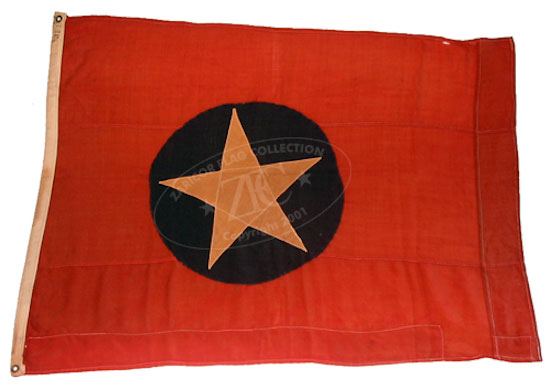
|
|
|
Vietnam War - Democratic Republic of Vietnam (North Vietnam)
|
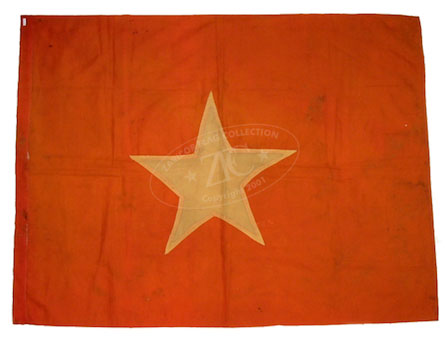
|

|
|
ZFC0486Â The flag of The Democratic Republic of Vietnam has al- ways been a single golden yellow five point star on a red field. It was adopted on 30 November 1955 following the partition of Vietnam after the First Indo-China War. It became the flag of a reunified Vietnam on 2 July 1976. This flag was acquired in 2000, with the provenance that it dated from 1965 to 1970, and was purchased in a second hand shop in a Danang in the Republic of Vietnam with
an assortment of fishing gear, marine related materials and motor bike parts. Read more
|
ZFC2491 This is a People’s Army of Vietnam (PAVN) Ho Chi Minh Campaign banner from 1975. This embroidered banner was de- signed to be viewed from one side only and is propaganda and moral banner made for the Ho Chi Minh Campaign of 1975, the final North Vietnamese and Viet Cong (VC) assault on Saigon (Ho Chi Minh City). The inscriptions, Quân đội Nhân dân Việt Nam and Chiến dịch Hồ Chà Minh above and below the central emblem, and the details of the embroidered insignia, of a North Vietnamese sol- dier in the foreground under a red flag bearing a likeness of Ho Chi Minh and North Vietnamese military might in the background, clearly indicate the North Vietnamese support for this final cam- paign of the Vietnam War. Banners like this would have been used to inspire troops at training and briefing facilities prior to the launch of the campaign. The campaign was highly successful, allowing the combined PAVN/VC force of 187,000 to defeat a South Vietnamese force four times its size in less than two months. Read more
|
|
|
Vietnam War - Republic of South Vietnam (Viet Cong)
|
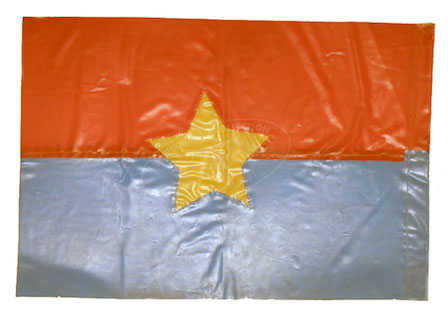
|

|
|
ZFC0358 This National Liberation Front (NLF) or “Vietcongâ€
was acquired by purchase in Saigon. It was dated to the 1970 – 1974 period, is fabricated of a plasticized cloth and was described as a “VC car or tank flag.†This is a distinct possibility as the NLF did acquire both vehicles and armor from the North Vietnamese. In
fact most of the VC’s large scale offensive capabilities were actually provided by the People’s Army of Vietnam after the Viet Cong’s operational capabilities was crippled after the 1968 Tet Offensive. Read more
|
ZFC0954 The National Liberation Front (NLF) or “Vietcong†flag was simply the flag of the Democratic republic of Vietnam flag with a blue bottom half. The flag was adopted in 1960. In 1969 it was adopted officially as the flag of the Republic of South Vietnam. But to thousands of American servicemen it was simply the Viet Cong (VC) Flag. This small flag has the "wide angle arms" on the star a feature often found on early versions of this flag. When acquired it was identified as a flag carried by a Viet Cong soldier and described “communist pack flag†and “as a soldier’s personal prayer flag†and is typical of the home made nature of most Viet Cong flags. Read more
|
|
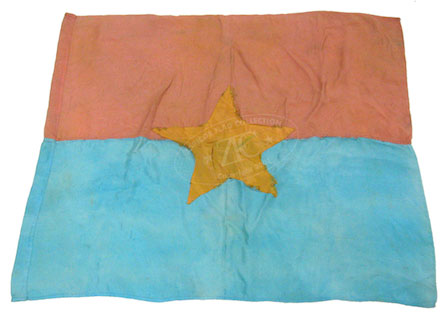
|
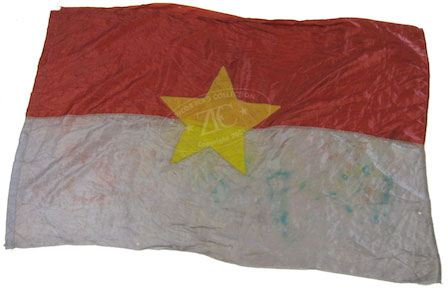
|
|
ZFC3348 This National Liberation Front (NLF) or “Vietcong†banner, unlike the majority of flags in collections and institutions in the US, was neither captured nor taken as either a trophy or booty, but rather a gift from a veteran who survived the war and kept it amongst his personal possessions. This Viet Cong banner is typical of those made in this era; it is made of locally available silk, and only has the star on one side indicating that it was designed to hang against a wall instead of flying from a free standing pole. Read more
|
ZFC3481Â This National Liberation front Flag is part of an extraordinary grouping of Viet Cong flags, memorabilia and
soldier personal items was acquired in Vietnam by Mr. Jean Phillipe Martinet from Viet Cong veteran Dao Van Duc. In addition to two Viet Cong (VC) flags this flag was accompanied by the items
listed below. Read more
|
|
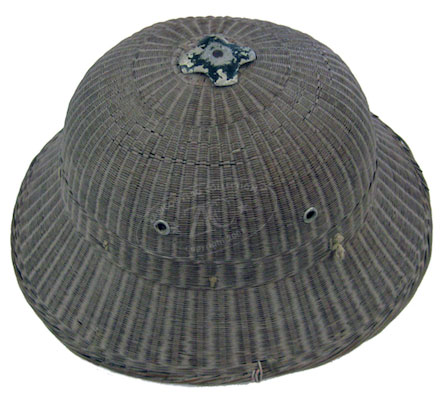
|
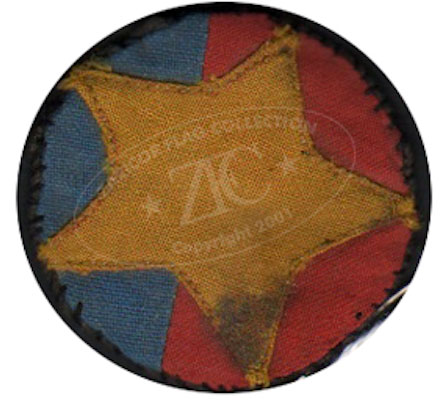
|
|
ZFC3482Â This woven reed Viet Cong sun helmet is typical of the field expedients with which the VC had to contend; it was woven from readily available reeds. It mimics the style and shape of the traditional pith helmets made famous by the British in India.
The cap badge ZFC3481 was likely worn on this helmet. Read more
|
ZFC3355Â VC Cap Badge This stylized flag Viet Cong cap insignia. They are extremely rare as most VC soldiers wore none. They were used to identify a leader or cadre officer at a party political meeting; insignias like this would have been removed on a combat operation. Read more
|
|
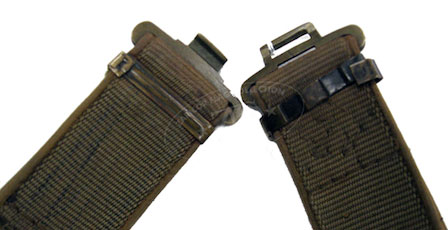
|

|
|
ZFC3350Â VC combat equipment web belt and buckle are field expedients copied from similar belts issued by the worlds military and used to carry a variety of combat loads. Read more
|
ZFC3484 VC Fighting Knife and sheath - This VC soldier knife & sheath is similar to issue NVA knives in design but is cruder, likely being jungle made as a field expedient is typical of the improvised equipment of the Viet Cong soldier from 1959 to 1968. After the Tet Offensive much of the VC equipment was supplied by the People’s Army of Vietnam. Read more
|
|
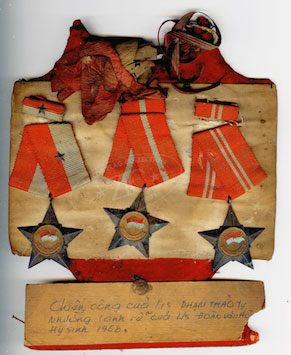
|

|
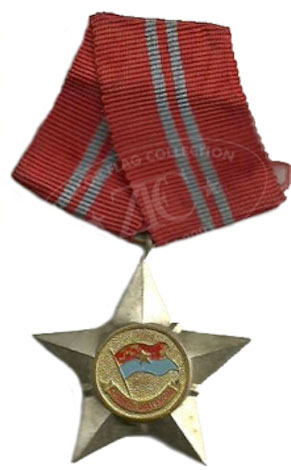
|
|
ZFC3485 Viet Cong or “Republic of South Vietnam†Liberation War Exploits Order awarded by the NLF to units and individu- als for outstanding participation in armed combat in the South, this Order was estab- lished on September 23, 1963. Its inscrip- tion reads, CHIEN-CONG GIAI-PHONG (Armed Achievements Liberation). These medals, orders and decorations awarded
by the Viet Cong have all been adopted as official by the Hanoi government. Read more
|
ZFC3486Â Soldier Of Liberation Order 3rd Class was awarded to individuals participat- ing in the liberation of the south. These awards were established in 1963 and were awarded by the NLF to units and individu- als for outstanding participation in armed combat in the South. The inscription reads, CHIEN-CONG GIAI-PHONG (Armed Achievements Liberation). Read more
|
ZFC3487Â VC Soldier of the Liberation, 2nd Class was awarded to individuals par- ticipating in the liberation of the south for feats exceeding the 3rd class opf the award. Established in 1963 and were awarded by the NLF to units and individuals for out- standing participation in armed combat in the South. The inscription also reads, CHIEN-CONG GIAI-PHONG (Armed Achievements Liberation). Read more
|
|
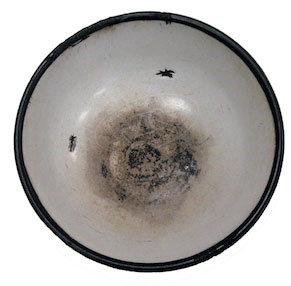
|

|

|
|
ZFC3349 VC soldier’s enameled rice bowl, note the ring on the bottom for easy attachment to belt or backpack. Read more
|
ZFC3352Â Wooden VC chop sticks most likely made in the field as an expedient and are typical of the improvised equipment of the Viet Cong soldier. Read more
|
ZFC3353Â Wooden VC chop sticks most likely made in the field as an expedient and are typical of the improvised equipment of the Viet Cong soldier Read more
|
|
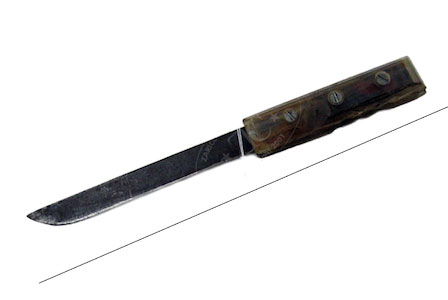
|

|
|
ZFC3351Â VC camp knife is an improvised camp knife made in the jungle out of scrap metal with clear plastic handles thought to have been scavenged from the windshield or windows of a shot-down helicopter. Read more
|
ZFC3356Â A VC Alcohol Lamp - Lamps like this would have been extremely useful in any of the numerous VC tunnel complexes. Read more
|
|

|

|
|
ZFC3490 This is a “Commodore†brand petrol lighter made by the preeminent French manufacturer of lighters, Quercia. The Com- modore brand lighter was introduced after WWII in 1947. Made of tooled aluminum it was light, sturdy and functioned on a variety of fuel sources making it popular with the French military. This is doubtless a lighter from the French colonial period in Viet Nam. Lighters designed to burn gasoline were very popular among sol- diers the world over. Read more
|
ZFC3492Â VC LUC.KY lighter - This is an Asian Made LUC.KY brand lighter. Lighters like this were indispensable as a means of lighting the tunnel lamps so vital to the Viet Cong in their elaborate tunnel complexes like those at Cu Chi and elsewhere. Read more
|
|

|
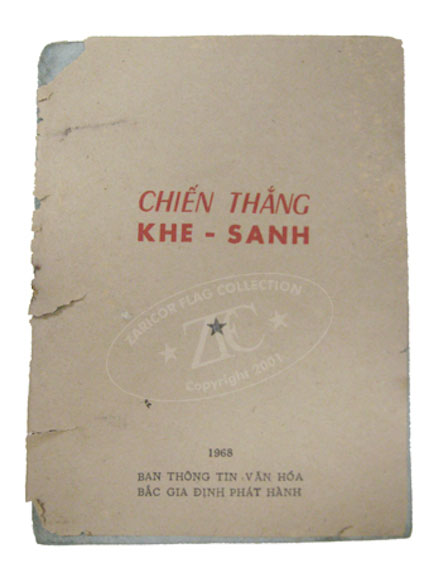
|
|
ZFC3354Â VC Quan Giai Phong Newspaper - This an issue of the newspaper of the National Liberation Front of South Vietnam, dated 2 September 1968, from the period after both the Tet offensive of January/February, and the mini Tet of May & August 1968. The paper was an important source of both propaganda and moral justification for the Viet Cong soldiers. Read more
|
ZFC3491 VC “Victory at Keh-San†propaganda booklet. This booklet has not been translated, but it likely claims that the Battle of Keh San was a Viet Cong Victory. In fact both sides claimed victory, the VC never took the base; but the US abandoned the base after completely destroying it. The so-called riddle of Khe-Sanh has never been solved: Was it in fact a diversionary attack prior to Tet, or was Tet a diversion for Khe-Sanh? Read more
|
|
|
The Space Race - The Cold War played out in the Cosmos
|
|
Achievements in space certainly rank among mankind’s greatest technological and scientific accomplishments. However, in addition to the extraordinary technological feats involved there was a second major component, the continuation of the Cold War, known as the “Space Race.†No other space artifact is more symbolic of the participants in this race than the national flags they carried into space.
|
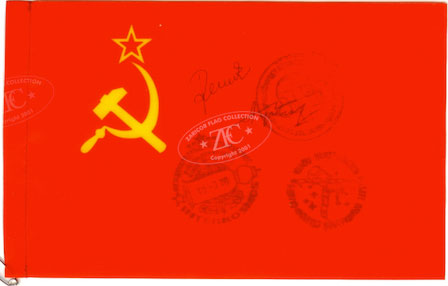
|

|
|
ZFC3152Â This national flag of the Union of Soviet Socialist Republics was carried aboard the Salyut 6, a Soviet orbital space station, launched on September 29, 1977. Although it was after the successful American lunar landing, the USSR continued the Space Race from orbiting space stations. This flag bears the mission stamps of the Salyut Program. Read more
|
ZFC2519Â This United States flag was carried to the moon in the Official Flight Kit of Apollo 14, the third US manned lunar landing January / February 1971. The astronauts carried these flags for later presentation as lunar mementos. These were often given to foreign dignitaries; a way for their nation to vicariously participate in the Space Race. Read more
|
|
|
Artifacts of the Cold War - Global Strife reflected in everyday objects
|
|
So prevalent was the culture of the Cold War that it permeated unobtrusively into ubiquitous utilitarian objects, occurring without note and accepted as normal everyday occurrences.
|
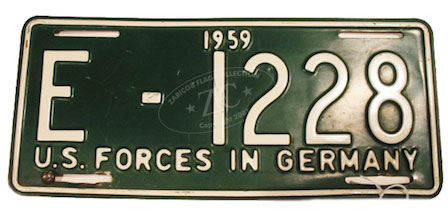
|
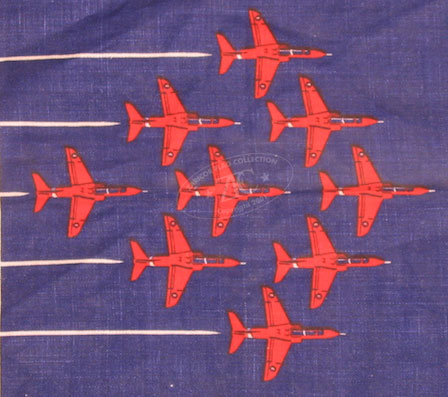
|
|
ZFC3009Â US Forces in Germany vehicle plate from 1959.
After World War II the United States Army remained stationed in Germany, not as an occupying power, but as frontline troops stationed there to counter the threat posed by the nations of the Warsaw Pact. These servicemen were often accompanied by their families, and their vehicle license plates identified them as part
of the US Forces in Germany. Read more
|
ZFC0259Â This Royal Air Force Benevolent Fund linen is imprinted with images of both military and civilian jet aircraft. The RAF Benevolent Fund is one of the leading military welfare charities in the United Kingdom. It was founded in 1919 to aid Royal Air Force veterans, but by the Cold War had expanded its eleemosynary activities to include all military families. This image was created in 1986 by Wilfred Hardy, a British artist and illustrator, specializing in painting images of aircraft, producing posters and private commissions like this tea towel. Read more
|
|

|

|
|
ZFC3249Â This photographic reprint shows two US Marines, Sergeant Richard E. Cly and an unidentified Marine rifleman displaying a captured North Korean flag after the fierce fighting at Chosen Reservoir in November and December 1950. Sgt. Cly, of Minneapolis, Minn served with the 2nd Battalion, 7th Marines in Korea. The original image, #127-GK-234A-A4692, is in the collections of the National Archives and Records Administration. Read more
|
ZFC3607 Civil Defense armbands were issued to volunteers during World War II and the Cold War that identified them as civil defense workers. Perhaps the most memorable aspect of the Cold War civil defense effort was the educational film “Duck and Cover†made and promoted by the government which advocated that school children “dick and cover†– duck under their desks and shield their eyes – when the “see the flash†(of a thermonuclear explosion.) Read more
|
|














































































